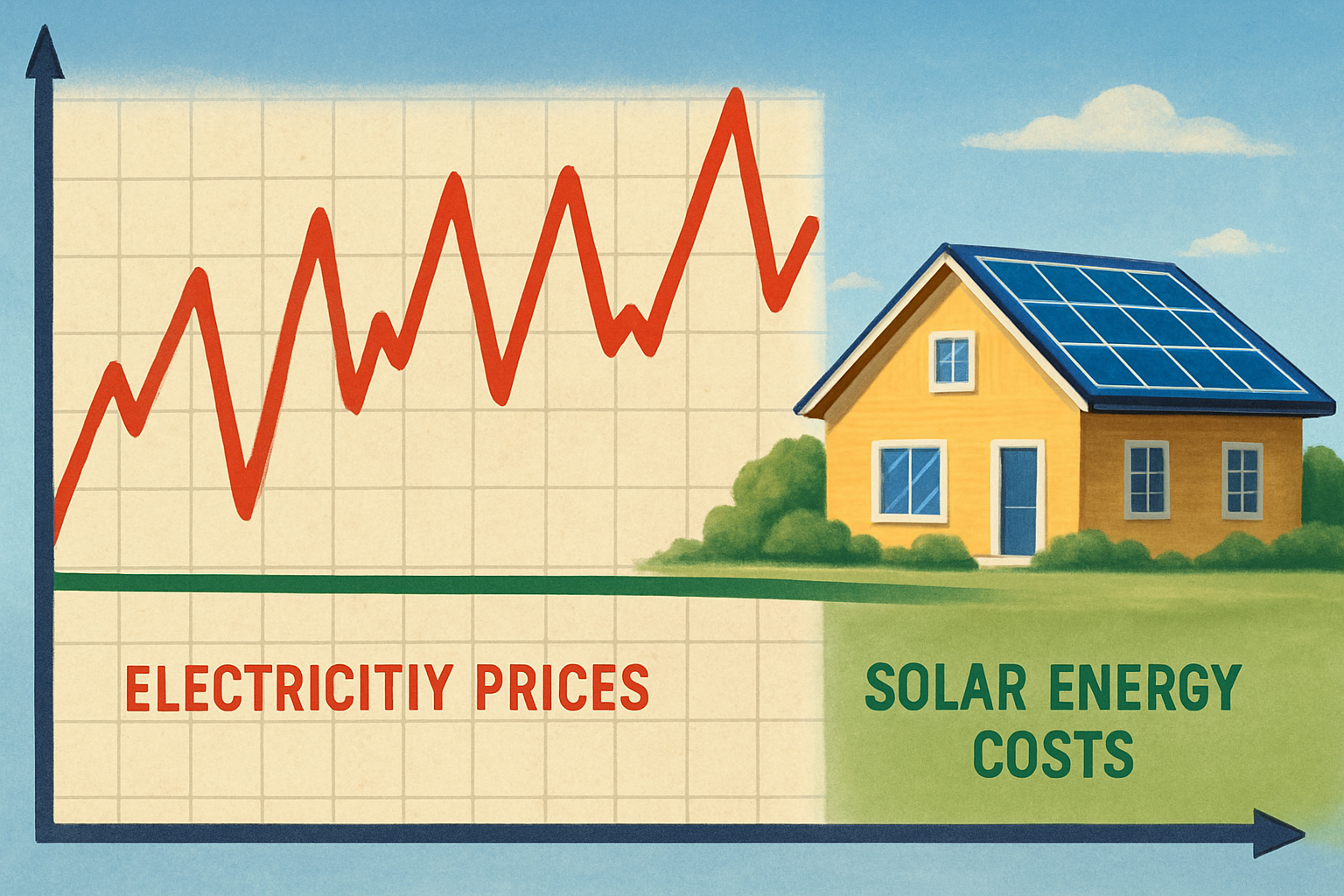Embracing solar energy offers a clear path to reducing electricity bills and achieving greater energy independence. Many homeowners consider installing solar panels to harness the sun's power. However, a common question arises: is it better to install a solar-only system, or should you integrate battery storage? The answer often depends on your specific energy needs, financial goals, and the local electricity market. This article explores the payback period for both solar-only and solar-plus-battery systems, helping you determine which investment aligns best with your objectives.

Solar-Only Systems: The Foundation of Energy Savings
How Solar-Only Systems Work
A solar-only system, often referred to as a grid-tied solar system, generates electricity from solar panels and feeds it directly into your home's electrical panel. If your panels produce more electricity than your home consumes, the excess power is sent back to the utility grid. Conversely, if your home needs more power than your solar panels are generating, it draws electricity from the grid. This continuous exchange is typically managed through a net metering program, where your utility credits you for the excess energy you contribute. Solar inverters play a crucial role in these systems, converting the direct current (DC) electricity from your panels into alternating current (AC) usable by your home appliances and the grid.
Financial Benefits and Payback Factors
The primary financial benefit of a solar-only system is the reduction in your monthly electricity bills. By generating your own power, you purchase less from the utility, especially during peak sunlight hours. The payback period for a solar-only system is influenced by several factors, including the initial installation cost, local electricity rates, available government incentives (like tax credits or rebates), and your household's energy consumption patterns. Historically, solar-only systems have offered a faster payback due to their lower upfront investment compared to systems with batteries. According to the International Energy Agency (IEA), policy support, such as tax credit extensions for solar PV, significantly boosts the prospects for low-emission power investments .
Integrating Battery Storage: Beyond Basic Solar
The Role of Energy Storage in a Solar System
Adding battery storage transforms a basic solar setup into a more versatile energy system. Batteries, such as high-performance, safe, and reliable lithium iron phosphate (LiFePO4) batteries, store excess solar electricity generated during the day. This stored energy can then be used when your panels are not producing, such as at night or during cloudy weather. This capability is central to home energy storage systems (ESS), which often integrate the battery, a hybrid inverter, and solar panels into a cohesive unit. For areas without reliable grid access, off-grid solar solutions with robust battery storage offer complete energy independence.
Enhanced Savings and Resilience with Batteries
While a solar-plus-battery system has a higher initial cost, it unlocks additional financial and practical benefits. Batteries allow you to maximize self-consumption of your generated solar power, reducing reliance on the grid even further. This is particularly advantageous in regions with time-of-use (TOU) electricity rates, where power from the grid costs more during peak demand hours. You can discharge your battery during these expensive periods, avoiding high utility charges. The International Renewable Energy Agency (IRENA) highlights that hybrid systems combining solar PV with battery storage enhance grid flexibility and reduce curtailment, allowing electricity to be shifted to periods of higher demand or market value . Beyond savings, battery storage provides critical backup power during grid outages, offering peace of mind and ensuring continuous electricity supply for essential appliances.
Payback Period Analysis: A Financial Deep Dive
Key Factors Influencing Payback
The payback period for any solar investment is the time it takes for the accumulated savings to equal the initial cost. For solar-only systems, this is primarily driven by bill reduction through net metering. For solar-plus-battery systems, the calculation becomes more complex, considering not just bill reduction but also energy arbitrage (buying low, selling/using high), avoided demand charges, and the value of resilience during outages. The IEA notes that initial cost can be a significant deterrent, and payback time is a common criterion for investment decisions, especially for households .
Calculating Payback: Solar-Only vs. Solar-Plus-Battery
While solar-only systems often have a shorter upfront payback period due to lower initial investment, solar-plus-battery systems can achieve a faster payback in specific scenarios or offer greater long-term value. Consider a system with a total cost of $20,000 for solar-only versus $35,000 for solar-plus-battery. If the solar-only system saves $1,500 annually, its payback is roughly 13.3 years. If the solar-plus-battery system saves $2,500 annually (due to optimized self-consumption, TOU arbitrage, and avoided peak charges), its payback is 14 years. Although the battery system's payback is slightly longer in this example, its enhanced functionality and greater total savings over the system's lifespan can yield a higher overall return on investment.
Factors that can accelerate the payback of a solar-plus-battery system include:
- High and escalating electricity rates, especially with significant TOU differentials.
- Strong incentives for battery storage, such as state-level rebates or federal tax credits (e.g., the US Inflation Reduction Act provides an investment tax credit for battery storage ).
- Frequent or prolonged power outages, where the value of backup power becomes substantial.
- Policies that limit net metering compensation, making self-consumption more valuable.
The Impact of Incentives and Market Conditions
Government incentives significantly shorten payback periods for both system types. The federal Investment Tax Credit (ITC) in the United States, for example, applies to both solar PV and battery storage, reducing the net cost of installation. IEA analysis of California's solar deployment highlights how a combination of ambitious renewable portfolio standards, time-of-use electricity pricing, and federal tax credits drive significant solar adoption . Local utility programs, such as those encouraging demand response or providing rebates for energy storage, also play a crucial role. Market conditions, including the declining costs of solar modules and battery technology, continue to improve the economic viability of these investments. For instance, projections indicate a pathway to lower battery storage upfront and O&M costs, improving overall system economics.
Making the Right Choice for Your Home
Assessing Your Energy Needs and Goals
Deciding between a solar-only system and a solar-plus-battery setup depends on your priorities. If your primary goal is to lower your electricity bill with the lowest possible upfront investment and you have a favorable net metering policy, a solar-only system might be ideal. However, if you seek maximum energy independence, protection from rising utility rates, resilience during power outages, and the ability to optimize energy use with time-of-use rates, the added investment in battery storage offers compelling advantages. Consider your historical energy consumption, local utility rate structures, and how critical continuous power is for your household.
Long-Term Value Beyond Simple Payback
While payback period is a critical financial metric, it is important to consider the long-term value. A solar-plus-battery system, despite a potentially longer initial payback, offers enhanced benefits over its 20-30 year lifespan. These include superior hedging against future electricity rate hikes, greater flexibility in managing your energy consumption, and the inherent security of backup power. The ability to store and dispatch your own energy provides a level of control and peace of mind that a solar-only system cannot match. Investing in an integrated system provides a comprehensive energy solution that adapts to evolving grid conditions and your household's changing needs.
| Feature | Solar-Only System | Solar-Plus-Battery System |
|---|---|---|
| Initial Cost | Lower | Higher |
| Primary Benefit | Electricity bill reduction via net metering | Maximized self-consumption, TOU optimization, backup power, bill reduction |
| Grid Reliance | High (relies on grid for excess power/shortfalls) | Lower (can operate independently during outages) |
| Payback Period | Potentially shorter (due to lower upfront cost) | Potentially longer, but higher overall ROI over lifespan |
| Resilience | None during grid outages | Provides backup power during outages |
| Energy Management | Limited | Advanced (charge/discharge optimization) |
Final Thoughts on Your Energy Investment
Choosing between a solar-only system and one with integrated battery storage is a strategic decision for your home's energy future. Both options offer significant long-term savings and environmental benefits. A solar-only system provides immediate bill reductions and a straightforward payback. Adding battery storage, while requiring a larger initial investment, unlocks advanced capabilities, greater energy independence, and crucial resilience against power disruptions. Evaluating your personal energy goals, understanding local incentives, and considering the long-term value proposition will guide you toward the optimal energy solution for your home.





Leave a comment
All comments are moderated before being published.
This site is protected by hCaptcha and the hCaptcha Privacy Policy and Terms of Service apply.